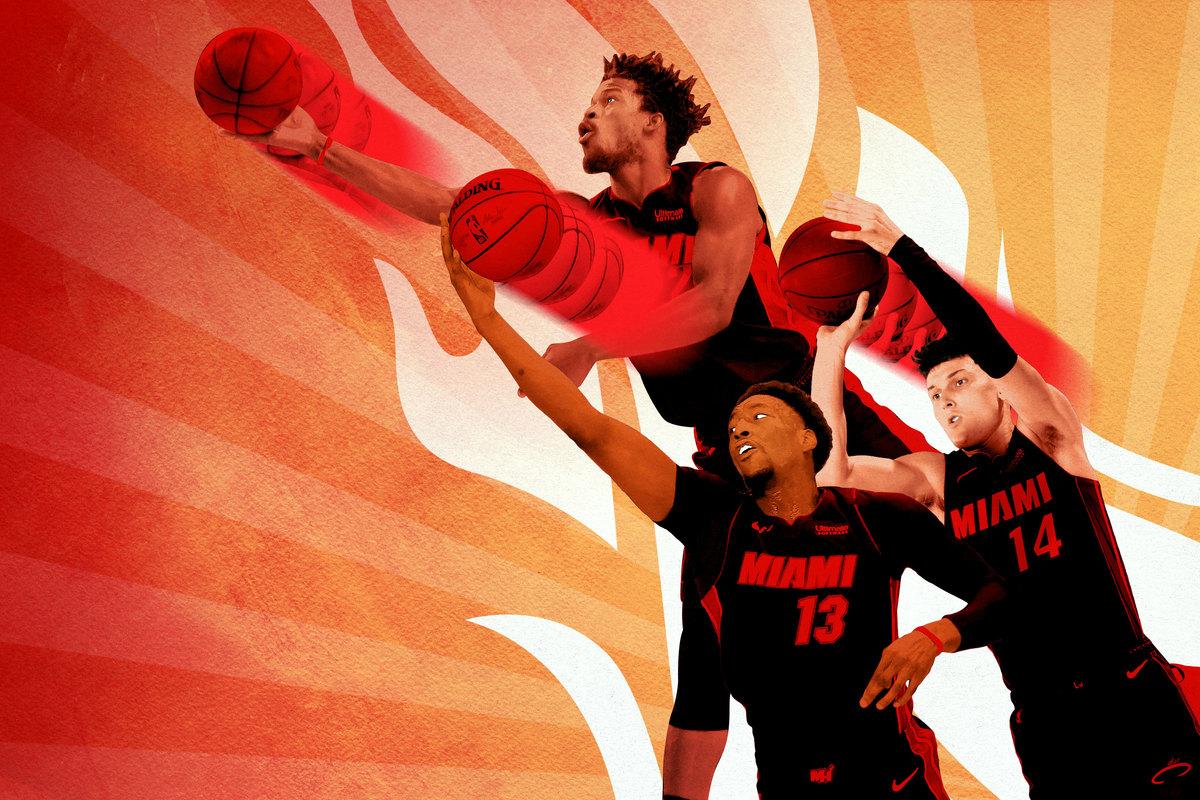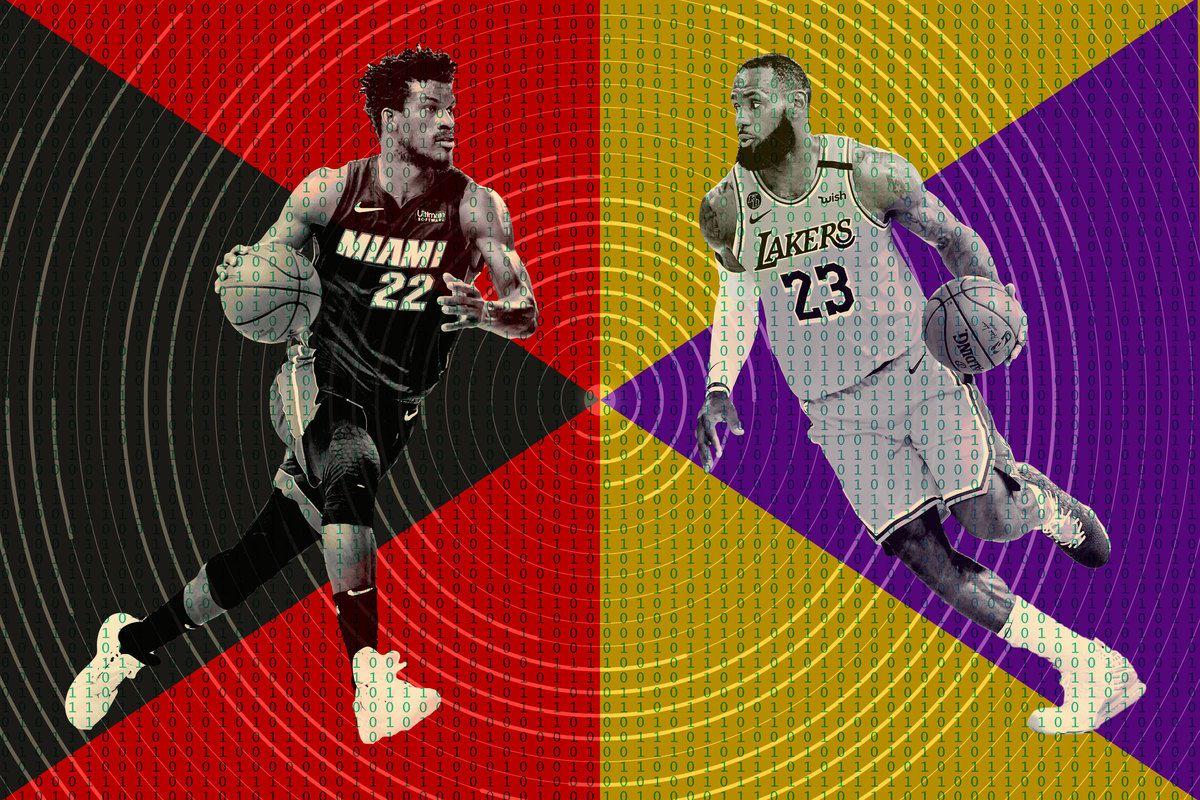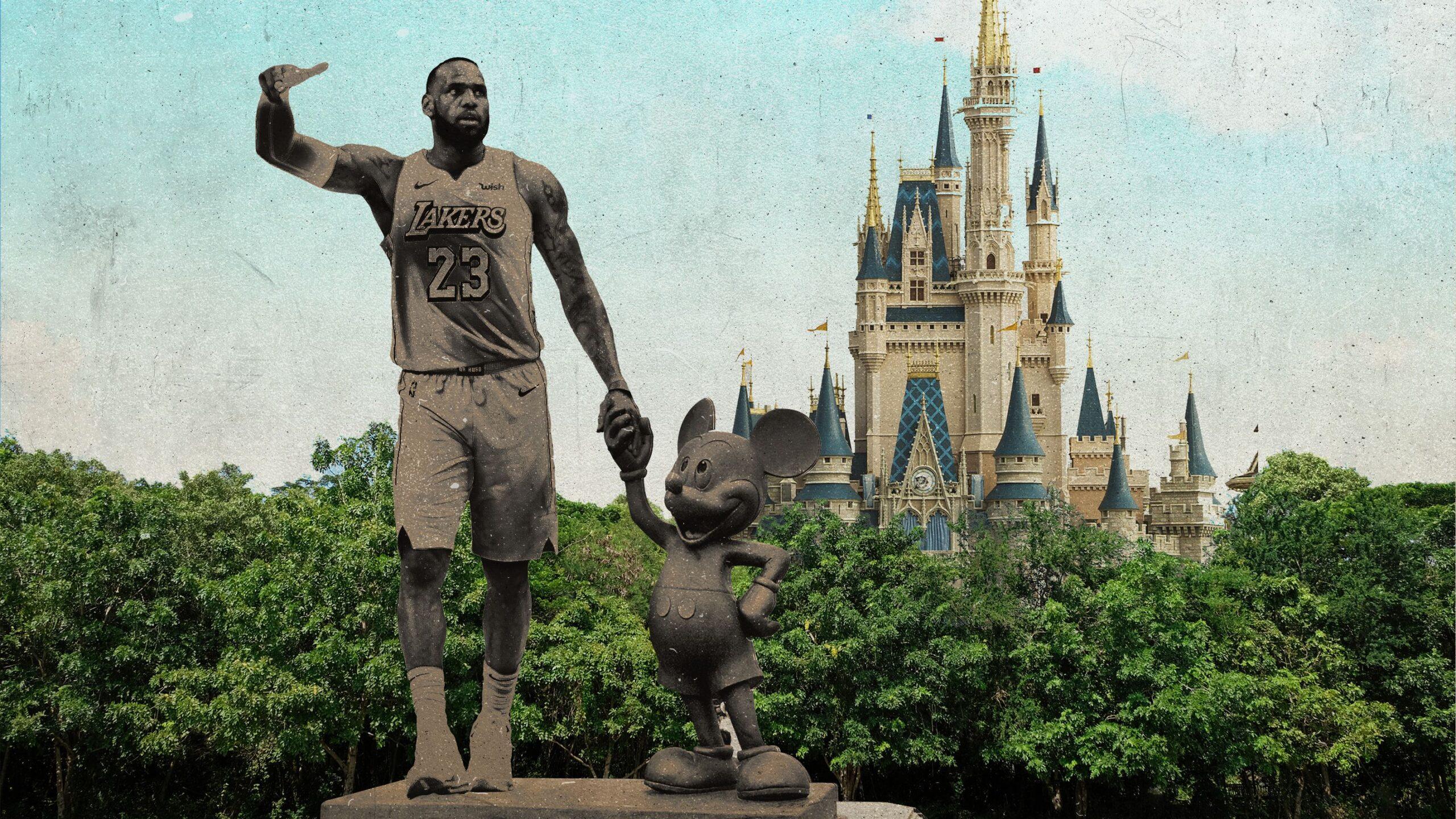
In an unprecedented NBA postseason, these Miami Heat are an unprecedented finalist—and not only because Wednesday’s Game 1 will be the first Finals game in franchise history that doesn’t feature Dwyane Wade in a starting lineup. The path the Heat took to the Finals, from last summer’s sign-and-trade for Jimmy Butler all the way through their Eastern Conference finals triumph over the Celtics, is full of unusual twists and turns.
So with the 2020 Finals set to tip off on Wednesday night, pitting LeBron James against Erik Spoelstra, Pat Riley against the Lakers, and Dion Waiters against the team with whom he started the season, let’s take a quick look at three ways that these Heat differentiated themselves from past finalists—and how they might differentiate themselves from past champions in the next couple of weeks.
How About a High Five?
The Lakers are the 80th no. 1 seed in the shot-clock era (dating back to 1954-55) to reach the Finals, meaning top seeds make up 61 percent of the total group; the Heat, by comparison, are the first no. 5 seed to do so.
NBA Playoff Performance by Seed in the Shot-Clock Era
That’s a rather remarkable first, which illustrates how top-heavy the NBA playoffs typically are; only three other finalists (the no. 6 Rockets in both 1981 and 1995, the no. 8 Knicks in 1999) were seeded lower than fifth in their respective postseason brackets. Miami beat the no. 4 Pacers, the no. 1 Bucks, and the no. 3 Celtics as the theoretical underdog—if not the actual underdog, especially against the Pacers—en route to the Finals.
Miami was almost the East’s no. 4 seed, and probably would have been if it had tried to win its “seeding game” finale against Indiana. Without home-court advantage in the bubble, the 4 vs. 5 order didn’t matter, so Jimmy Butler, Bam Adebayo, Jae Crowder, and Andre Iguodala didn’t play. Yet even if Miami had nabbed the no. 4 seed, it would still be in relatively unexplored territory. Just five no. 4 seeds have made the Finals—most recently the 2009-10 Celtics and 2017-18 Cavaliers—and only one, the 1968-69 Celtics, won the title from that position.
Peaking at the Right Time
One might expect a team that jumped from no. 5 seed to finalist to have hid a dominant underlying performance in the regular season; not so with the Heat. They won 44 regular-season games, and their point differential suggested they should have won 43. They outscored teams by an average of 2.9 points per game, which would make them one of the least impressive champions on record.
Worst Regular-Season Teams to Win a Title
Inspect those teams closely and a clear characteristic emerges: All of those teams except the 1994-95 Rockets played in the 1970s or earlier—in other words, before the playoff expansion to 16 teams. In the modern playoff era, those sixth-seeded Rockets are the only team to win the title with a worse point differential than this year’s Heat.
But even if the Heat don’t win the title, they stand almost alone as a finalist with such a mediocre regular-season performance. In the 16-team playoff era, just four other teams reached the Finals with a per-game differential below 3.
Worst Regular-Season Teams to Make the Finals, 1984-Present
LeBron led the top team on that list to overperform its regular-season showing in the playoffs. Now, he’s on the other side of another overperforming playoff club.
Before the postseason began, The Ringer’s Restart Odds playoff model calculated an expected baseline for each team’s playoff performance based largely on its regular-season point differential. And in those calculations, the Heat didn’t look like anything special. But the model updates its ratings as the playoffs progress, based on game-by-game results and opponent quality. Miami hasn’t just reached the Finals without much trouble; it’s done so by getting through two of the best teams in the league. The Lakers similarly sailed through the Western bracket but didn’t play any team as good as Milwaukee or Boston. So Miami’s rating has improved by far the most of any team during the playoffs.
Boost in Restart Odds Ratings of Team Winning Percentages
Who Needs Top Draft Picks?
Previous Miami teams to reach the Finals were stocked with top draft picks. The 2006 Heat had no. 1 pick Shaquille O’Neal; no. 2s Gary Payton and Alonzo Mourning; no. 5 Dwyane Wade; no. 6 Antoine Walker; and no. 7 Jason Williams. The 2011-14 teams had an even splashier group, with no. 1 James, no. 4 Chris Bosh, and no. 5 Wade—all from the same draft class, of course—leading the way and a supporting cast with the likes of no. 5 Ray Allen, no. 5 Mike Miller, and no. 6 Shane Battier.
But Miami’s only top-10 pick in the 2010s was Justise Winslow (no. 10 in 2015), who went to Memphis at this season’s trade deadline in the trade for Iguodala and Crowder. Essentially this whole Heat team came from later in the draft, or out of it entirely. Adebayo and Tyler Herro were late lottery picks. Butler went 30th overall. Crowder and Goran Dragic were second-rounders. Duncan Robinson and Kendrick Nunn were undrafted.
In fact, Iguodala—the no. 9 pick to Philadelphia back in 2004—is the only Miami player who was picked in the top 10. And while Iguodala is an important member of this team, particularly as it prepares to guard LeBron in the Finals, he’s also not a central figure, having scored just 3.6 percent of the team’s points this postseason. That tally for the Heat is the second-lowest for any finalist in the shot-clock era—though the leading team on the list is rather familiar, too. Only five finalists have a points proportion from top-10 picks below 10 percent.
Lowest Percentage of Playoff Points from Top-10 Picks
The 2013-14 Spurs—to whom I compared these Heat last week for their offensive distribution—are close, at 15.3 percent, with Tim Duncan as the only top-10 pick on the roster. Yet the average for finalists is about 53 or 54 percent of playoff points from top-10 picks. This season’s Lakers are at 63.1 percent, with no. 1 selections James and Anthony Davis leading the way. (The others: no. 1 Dwight Howard, no. 4 Waiters, and no. 8 Kentavious Caldwell-Pope.)
None of that past matters anymore, now that the Finals are about to begin. But for a team that has already exceeded expectations to such an extreme in the bubble, these markers of precedent are just another reminder of how far the Heat have come.



